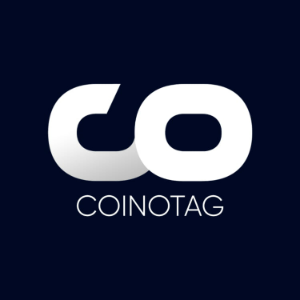Stablecoin Market Approaches $250B Milestone as Adoption and Infrastructure Boom
5 min read
The market capitalization of stablecoins continues to increase rapidly in 2025, and we have new numbers that bring us very close to that landmark $250 billion figure. That would be the first-time stablecoins have crossed that mark. And these numbers represent not only a burgeoning taste for dollar-like substitutes but also some broader stablecoin ecosystem maturation at this point. The stablecoin market cap is close to surpassing $250 billion for the first time, up 56 % year-on-year. pic.twitter.com/d0w0AN5euN — Sentora (previously IntoTheBlock) (@SentoraHQ) June 2, 2025 Stablecoins—previously seen as specialized instruments for crypto traders—are today viewed as essential to everything from DeFi (decentralized finance) to real-world payments. With increasing adoption, an expanding supply, and ever-more sophisticated infrastructure arrangements, the sector is experiencing a breakout moment. Stablecoins could soon prove instrumental to something that looks like an internet of money. Supply Surge and Market Maturity Define 2025 Landscape May marked a watershed moment for stablecoins. The overall stablecoin supply in circulation hit new all-time highs, keeping along a trend that has defined most of 2025. Tether (USDT) remains the dominant stablecoin player by a considerable distance in both volume and market share. Yet rivals like Circle’s USDC and Binance’s BUSD have pushed their way into new realms, too, with the result being an increasingly fragmented and diversified stablecoin marketplace. Stablecoin supply keeps climbing, hitting new highs. USDT still leads by a big margin, with USDC and BUSD growing steadily too. The diversity of stablecoins shows how much this market has matured, it’s no longer just a few names dominating. Watching these shifts helps spot… pic.twitter.com/V6TPVz2Ojb — Froggy (@GemBooster) June 2, 2025 The stablecoin ecosystem is no longer dominated by just one or two issuers. Instead, we’re seeing a broader array of tokens serving a much wider range of use cases. That means from algorithmic models to fiat-backed coins and regional digital currencies, the construction of the stablecoin landscape has become a lot more complex—and a lot more resilient. The array of stablecoin choices signifies not just a sector that’s undergoing development, but also one that’s achieving something close to institutional legitimacy. Investors can feel secure working in a terrain that’s not solely the domain of high-risk, high-reward operators. There’s an increasing order to the landscape, a burgeoning clarity about which vehicles are ripe for use. Stablecoins aren’t just signs of life in the crypto sector; they’re part and parcel of a crypto sector that feels fairly close to a tightly regulated, somewhat boring, and definitely upper-middle-class financial space. Record 33.1 Million Active Addresses Signal Explosive Adoption One of the most persuasive signs of the use of stablecoins isn’t just how many are out there but how many people are using them. In May, active stablecoin addresses hit a record-breaking 33.1 million, data from Artemis show. That number really emphasizes, to me, how many people are using stablecoins in their daily blockchain lives and the role they play as a financial underpinning of a wide variety of transactions and decentralized applications. Stablecoins have become a necessity for DeFi platforms, NFT marketplaces, and cross-border payments. Their price stability and predictable value make them the preferred asset for on-chain transactions. Stablecoins facilitate transactions and transfers in a manner comparable to what the US dollar does in the traditional financial system. The activity in wallet shows the unfaltering belief held by many in the industry since long: stablecoins are the on-chain, go-to currency. When you dig into the numbers, though, it starts to really sink in just how much this is the case and how likely this is to keep being the case, lending further credence to the almost unanimous belief that stablecoins are here to stay. Circle’s CCTP Hits Record Volume, Driving Cross-Chain Liquidity One of the most notable happenings in May was Circle’s Cross-Chain Transfer Protocol (CCTP), which enables the effortless transfer of USDC, across multiple blockchain networks. CCTP saw an unprecedented $7.7 billion in transfer volume during the month—an all-time high and a remarkable 83.3% increase from April. According to Artemis, the number of active stablecoin addresses in May reached a record 33.1 million. Notably, Circle’s CCTP bridge facilitated $7.7 billion in volume during the month—an all-time high and up 83.3% from April. CCTP enables near-instant cross-chain USDC transfers.… — Wu Blockchain (@WuBlockchain) June 2, 2025 CCTP is quickly turning into a core element of cross-chain liquidity, enabling USDC to flow almost instantly between a variety of ecosystems, including Ethereum, Avalanche, and Arbitrum. This capability lets users and developers move liquid assets across different chains without the help of wrapped tokens or the kind of third-party bridges that have, until now, served as a stopgap way to transfer stablecoins across chains. With interoperability becoming a key focal point in crypto’s next phase, CCTP’s explosive growth underscores the importance of a reliable infrastructure for transferring value between ecosystems. This insistence on reliable infrastructure also suggests that users are increasingly demanding faster, safer, and more seamless ways to move their assets—demands that tools like CCTP are beginning to meet. Looking Ahead: A Turning Point for Stablecoins Stablecoins have a different and more useful place in the digital economy. A stablecoin market exists now. Because it is expanding and has the potential to integrate much further, it is something we have to factor in. As the sector moves nearer to the $250 billion mark, there is no longer any time to waste on a narrative that is solely about supply or speculation. Now, it is also an issue of usability, scalability, and integration into real-world finance. And in that story, stablecoins are no longer just actors on the stage; they are becoming the very infrastructure on which the future of finance is being built. Disclosure: This is not trading or investment advice. Always do your research before buying any cryptocurrency or investing in any services. Follow us on Twitter @nulltxnews to stay updated with the latest Crypto, NFT, AI, Cybersecurity, Distributed Computing, and Metaverse news !

Source: NullTx



